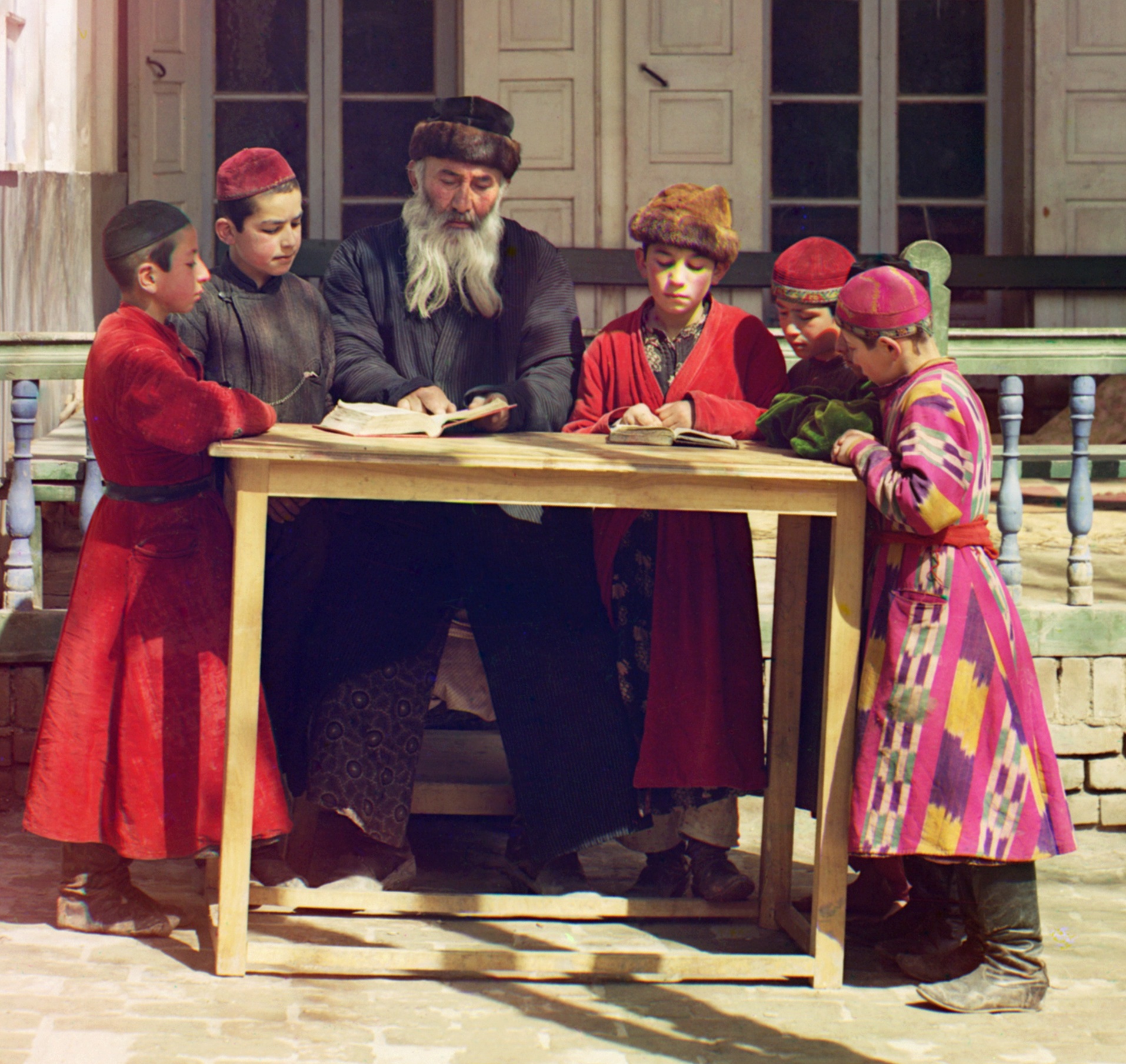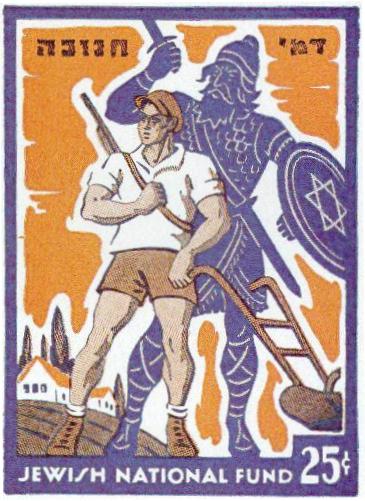|
Judaism In Uzbekistan
The history of the Jews in Uzbekistan refers to the history of two distinct communities; the more religious and traditional Bukharan Jewish community and the Ashkenazi community. There were 94,900 Jews in Uzbekistan in 1989, but fewer than 10,000 remained in 2021 (around 38% of which lived in Tashkent). There are 12 synagogues in Uzbekistan.Uzbek Jewish worries JTA Fergana Jewish community Semyon Abdurakhmanov is the head of the Jewish community. There are six synagogues in the Valley. There are several hundred Jews in Fergana, Namangan, and |
Jewish Children With Their Teacher In Samarkand Cropped
Jews ( he, יְהוּדִים, , ) or Jewish people are an ethnoreligious group and nation originating from the Israelites Israelite origins and kingdom: "The first act in the long drama of Jewish history is the age of the Israelites""The people of the Kingdom of Israel and the ethnic and religious group known as the Jewish people that descended from them have been subjected to a number of forced migrations in their history" and Hebrews of historical Israel and Judah. Jewish ethnicity, nationhood, and religion are strongly interrelated, "Historically, the religious and ethnic dimensions of Jewish identity have been closely interwoven. In fact, so closely bound are they, that the traditional Jewish lexicon hardly distinguishes between the two concepts. Jewish religious practice, by definition, was observed exclusively by the Jewish people, and notions of Jewish peoplehood, nation, and community were suffused with faith in the Jewish God, the practice of Jewish (religious) la ... [...More Info...] [...Related Items...] OR: [Wikipedia] [Google] [Baidu] |
Namangan
Namangan (; ) is a city in eastern Uzbekistan. It is the administrative, economic, and cultural center of Namangan Region. Administratively, it is a district-level city. Namangan is located in the northern edge of the Fergana Valley, less than 30 km from the Kyrgyzstan border. The city is served by Namangan Airport. Namangan has been an important craft and trade center in the Fergana Valley since the 17th century. Many factories were built in the city during Soviet Union, Soviet times. During Eastern Front (World War II), World War II, industrial production in Namangan increased fivefold compared with that of 1926–1927. Currently, Namangan is mainly a center for light industry, especially in food. The officially registered population of the city was 475,700 in 2014. Uzbeks are the largest ethnic group. History The city takes its name from the local salt mines (in Persian language, Persian نمککان (''namak kan'') — "a salt mine"). Babur mentioned the village of ... [...More Info...] [...Related Items...] OR: [Wikipedia] [Google] [Baidu] |
Aliyah
Aliyah (, ; he, עֲלִיָּה ''ʿălīyyā'', ) is the immigration of Jews from Jewish diaspora, the diaspora to, historically, the geographical Land of Israel, which is in the modern era chiefly represented by the Israel, State of Israel. Traditionally described as "the act of going up" (towards the Jerusalem in Judaism, Jewish holy city of Jerusalem), moving to the Land of Israel or "making aliyah" is one of the most basic tenets of Zionism. The opposite action—emigration by Jews from the Land of Israel—is referred to in the Hebrew language as ''yerida'' (). The Law of Return that was passed by the Knesset, Israeli parliament in 1950 gives all diaspora Jews, as well as their children and grandchildren, the right to relocate to Israel and acquire Israeli citizenship on the basis of connecting to their Jewish identity. For much of Jewish history, their history, most Jews have lived in the diaspora outside of the Land of Israel due to Jewish military history, various hi ... [...More Info...] [...Related Items...] OR: [Wikipedia] [Google] [Baidu] |
Immigration
Immigration is the international movement of people to a destination country of which they are not natives or where they do not possess citizenship in order to settle as permanent residents or naturalized citizens. Commuters, tourists, and other short-term stays in a destination country do not fall under the definition of immigration or migration; seasonal labour immigration is sometimes included, however. As for economic effects, research suggests that migration is beneficial both to the receiving and sending countries. Research, with few exceptions, finds that immigration on average has positive economic effects on the native population, but is mixed as to whether low-skilled immigration adversely affects low-skilled natives. Studies show that the elimination of barriers to migration would have profound effects on world GDP, with estimates of gains ranging between 67 and 147 percent for the scenarios in which 37 to 53 percent of the developing countries' workers migrate ... [...More Info...] [...Related Items...] OR: [Wikipedia] [Google] [Baidu] |
Emigration
Emigration is the act of leaving a resident country or place of residence with the intent to settle elsewhere (to permanently leave a country). Conversely, immigration describes the movement of people into one country from another (to permanently move to a country). A migrant ''emigrates'' from their old country, and ''immigrates'' to their new country. Thus, both emigration and immigration describe migration, but from different countries' perspectives. Demographers examine push and pull factors for people to be pushed out of one place and attracted to another. There can be a desire to escape negative circumstances such as shortages of land or jobs, or unfair treatment. People can be pulled to the opportunities available elsewhere. Fleeing from oppressive conditions, being a refugee and seeking asylum to get refugee status in a foreign country, may lead to permanent emigration. Forced displacement refers to groups that are forced to abandon their native country, such as by ... [...More Info...] [...Related Items...] OR: [Wikipedia] [Google] [Baidu] |
Collapse Of Communism
The Revolutions of 1989, also known as the Fall of Communism, was a revolutionary wave that resulted in the end of most communist states in the world. Sometimes this revolutionary wave is also called the Fall of Nations or the Autumn of Nations, a play on the term Spring of Nations that is sometimes used to describe the Revolutions of 1848 in Europe. It also led to the eventual breakup of the Soviet Union—the world's largest communist state—and the abandonment of communist regimes in many parts of the world, some of which were violently overthrown. The events, especially the fall of the Soviet Union, drastically altered the world's balance of power, marking the end of the Cold War and the beginning of the post-Cold War era. The earliest recorded protests were started in Kazakhstan, then part of the Soviet Union, in 1986 with the student demonstrations — the last chapter of these revolutions is considered to be in 1993 when Cambodia enacted a new Constitution in whi ... [...More Info...] [...Related Items...] OR: [Wikipedia] [Google] [Baidu] |
Uzbek SSR
Uzbekistan (, ) is the common English name for the Uzbek Soviet Socialist Republic (Uzbek SSR; uz, Ўзбекистон Совет Социалистик Республикаси, Oʻzbekiston Sovet Sotsialistik Respublikasi, in Russian: Узбекская Советская Социалистическая Республика, Uzbekskaya Sovetskaya Sotsialisticheskaya Respublika. It was also referred to as Uzbekistan SSR, Uzbek: Ўзбекистон ССР, O’zbekiston SSR; russian: Узбекская ССР, link=no, ''Uzbekskaya SSR'') and later, the Republic of Uzbekistan ( uz, Ўзбекистон Республикаси, Oʻzbekiston Respublikasi; Russian: Республика Узбекистан, Respublika Uzbekistan), that refers to the period of Uzbekistan from 1924 to 1991 as one of the constituent republics of the Soviet Union. It was governed by the Uzbek branch of the Soviet Communist Party, the legal political party, from 1925 until 1990. From 1990 to 1991, ... [...More Info...] [...Related Items...] OR: [Wikipedia] [Google] [Baidu] |
Tat People (Caucasus)
The Tat people (also: ''Tat'', ''Parsi'', ''Daghli'', ''Lohijon'') are an Iranian people presently living within Azerbaijan and Russia (mainly Southern Dagestan). The Tats are part of the indigenous peoples of Iranian origin in the Caucasus. Tats use the Tat language, a southwestern Iranian language somewhat different from Standard Persian, as well as Azerbaijani and Russian. Tats are mainly Shia Muslims with a significant Sunni Muslim minority. The 1886–1892 Tsarist population figures counted 124,683 Tats in the Russian Caucasus of which 118,165 were located in the Baku Governorate and 3,609 in the Dagestan Oblast.Tsutsiev, Arthur. "Appendix 3: Ethnic Composition of the Caucasus: Historical Population Statistics". Atlas of the Ethno-Political History of the Caucasus, New Haven: Yale University Press, 2014, p. 180. The 1897 Russian Empire census recorded 95,056 Tats, of which 89,519 were in the Baku Governorate and 2,998 in the Dagestan Oblast. The 1926 Soviet census only c ... [...More Info...] [...Related Items...] OR: [Wikipedia] [Google] [Baidu] |
Krymchaks
The Krymchaks ( Krymchak: , , , ) are Jewish ethno-religious communities of Crimea derived from Turkic-speaking adherents of Rabbinic Judaism.Krymchaks at the They have historically lived in close proximity to the , who follow . At first ''krymchak'' was a Russian descriptive used to differentiate them from their [...More Info...] [...Related Items...] OR: [Wikipedia] [Google] [Baidu] |
Georgian Jews
Georgian Jews ( ka, ქართველი ებრაელები, tr) are a community of Jews who migrated to Georgia during the Babylonian captivity in the 6th century BCE.The Wellspring of Georgian Historiography: The Early Medieval Historical Chronicle The Conversion of Katli and The Life of St. Nino, Constantine B. Lerner, England: Bennett and Bloom, London, 2004, p. 60 It is one of the oldest communities in that land. Prior to Georgia's annexation by the Russian Empire in 1801, the 2,600-year history of the Georgian Jews was marked by an almost total absence of antisemitism and a visible assimilation in the Georgian language and culture.Forget Atlanta - this is the Georgia on my mind By Jewish Discoveries and Harry D. Wall Feb. 7, 2015, Haaretz The Georgian Jews were considered ethnicall ... [...More Info...] [...Related Items...] OR: [Wikipedia] [Google] [Baidu] |
Mountain Jews
Mountain Jews or Caucasus Jews also known as Juhuro, Juvuro, Juhuri, Juwuri, Juhurim, Kavkazi Jews or Gorsky Jews ( he, יהודי קווקז ''Yehudey Kavkaz'' or ''Yehudey he-Harim''; russian: Горские евреи, translit=Gorskie Yevrei, az, Dağ Yəhudiləri) are Jews of the eastern and northern Caucasus, mainly Azerbaijan, and various republics in the Russian Federation: Chechnya, Ingushetia, Dagestan, Karachay-Cherkessia, and Kabardino-Balkaria. The Mountain Jews are the descendants of Persian Jews from Iran. Mountain Jews took shape as a community after Qajar Iran ceded the areas in which they lived to the Russian Empire as part of the Treaty of Gulistan of 1813. The forerunners of the Mountain Jewish community were in Ancient Persia from the 5th century BCE; their language, called Judeo-Tat, is an ancient Southwest Iranian language which integrates many elements of Ancient Hebrew."Mountain Jews: customs and daily life in the Caucasus'', Leʼah Miḳdash-Shema" ... [...More Info...] [...Related Items...] OR: [Wikipedia] [Google] [Baidu] |
Israel
Israel (; he, יִשְׂרָאֵל, ; ar, إِسْرَائِيل, ), officially the State of Israel ( he, מְדִינַת יִשְׂרָאֵל, label=none, translit=Medīnat Yīsrāʾēl; ), is a country in Western Asia. It is situated on the southeastern shore of the Mediterranean Sea and the northern shore of the Red Sea, and shares borders with Lebanon to the north, Syria to the northeast, Jordan to the east, and Egypt to the southwest. Israel also is bordered by the Palestinian territories of the West Bank and the Gaza Strip to the east and west, respectively. Tel Aviv is the economic and technological center of the country, while its seat of government is in its proclaimed capital of Jerusalem, although Israeli sovereignty over East Jerusalem is unrecognized internationally. The land held by present-day Israel witnessed some of the earliest human occupations outside Africa and was among the earliest known sites of agriculture. It was inhabited by the Canaanites ... [...More Info...] [...Related Items...] OR: [Wikipedia] [Google] [Baidu] |






